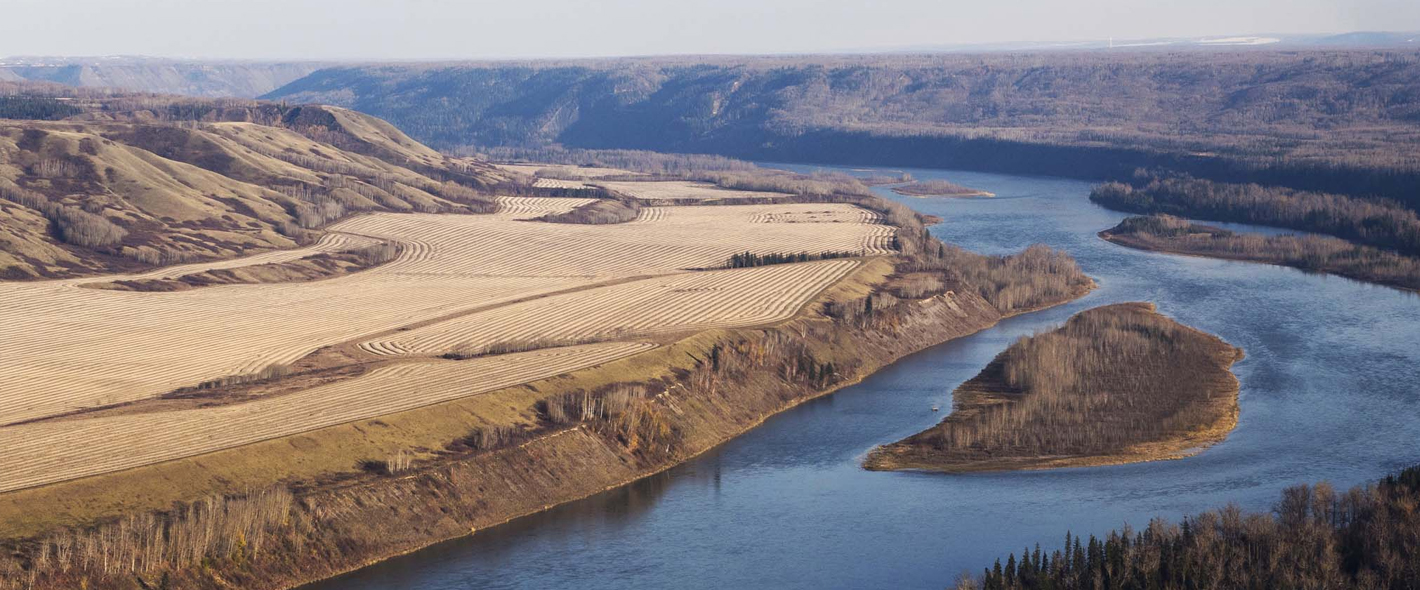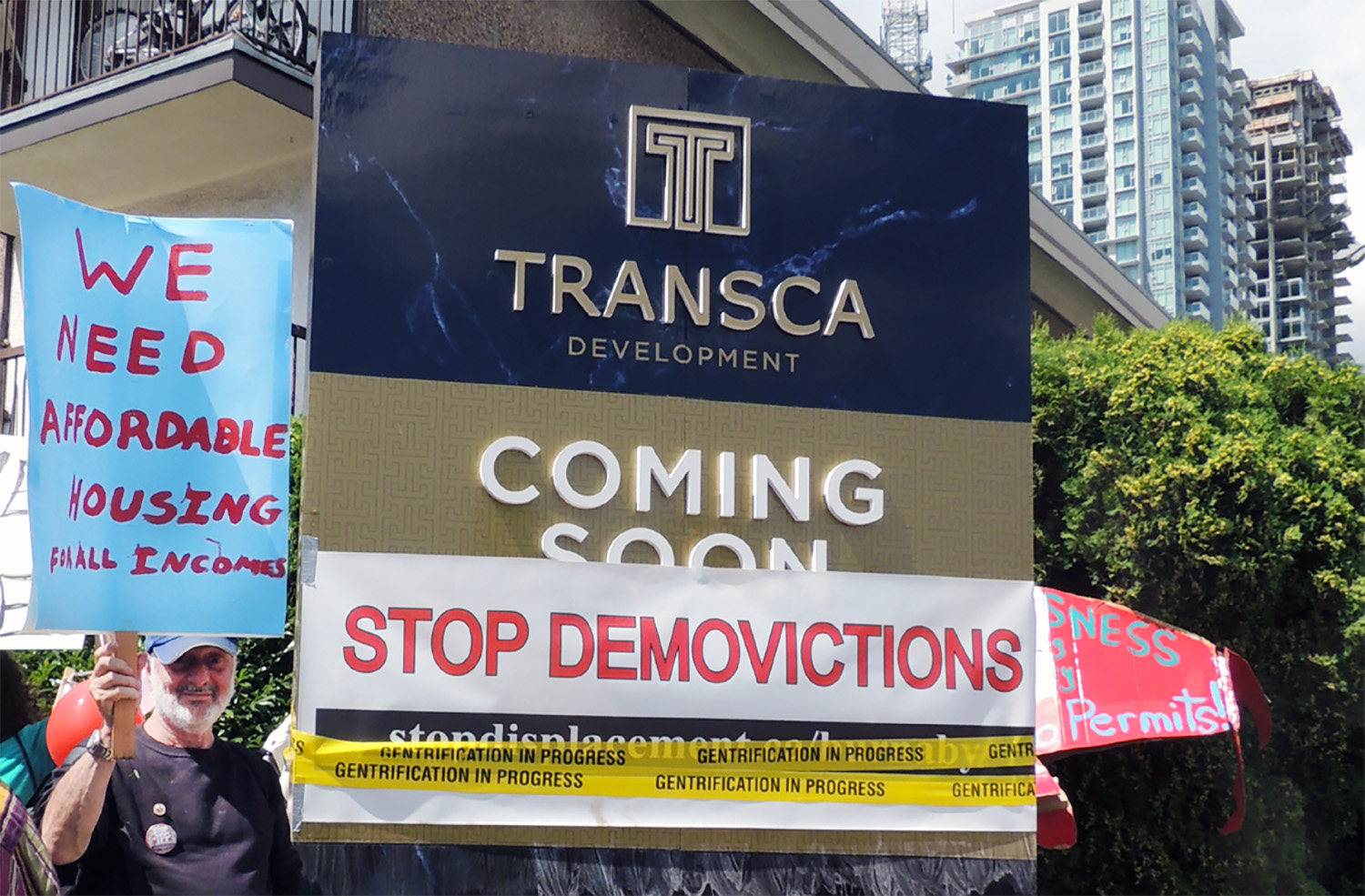Damming the Peace — the Hidden Costs of the Site C Dam, edited by Wendy Holm, published by James Lorimer & Co., 2018. Book review by Tim Pelzer
“Damming the Peace” delivers a devastating critique of the Site C dam building project in British Columbia’s Peace River Valley and tells us why the project should be cancelled. Originally started by the BC Liberals, the NDP-Green coalition government chose to continue building Site C, despite previous opposition. They justified the continuation on grounds that economic losses would incur if the project was cancelled, because four billion dollars had already been spent.
One important reason to cancel the dam project is because there will probably be no demand for the electricity it will generate. BC Hydro wants to build the dam because it forecasts that with future population growth, more power will be needed. However, future demand is difficult to accurately predict. Today, energy consumption is the same as it was 10 years ago— even with population growth — due to a decline in resource industries and warmer temperatures.
Former BC Hydro CEO Marc Eliesen, who opposes Site C, says that you never build a dam without customers first signing contracts agreeing to buy the electricity, which has not taken place. “There was no business case for starting construction on Site C. There is a business case for stopping construction,” he says in an interview with one of the book’s authors.
Despite this inconvenient truth, the government will spend $10 billion (and possibly more with cost overruns) to build the dam. If there is no future demand, the utility will have to sell the power on the open market (at low prices) for a loss, argues Eliesen, and the $10 billion to build the dam will greatly add to BC Hydro’s debt.
The researchers, specialists and academics who contribute essays to the book agree that it would be more economical to invest in solar, wind and geothermal energy if more electricity is needed in the future. Prices for green energy and storage batteries are dropping every year, making them cheaper and faster to set up than building a dam. Conservation measures and green retrofits, which encourage people to use less electricity, can also be employed to limit electricity consumption.
Energy consultant Guy Dauncey says the $4 billion already spent on Site C could be offset in the future with lower energy bills from solar, wind, geothermal and energy conservation measures.
First Nations, who under Treaty 8 supposedly own most of the valley, should have the final say on Site C. Instead, they were simply told by provincial ministers that the dam would be built, regardless of their concerns that it will flood traditional hunting, gathering and burial grounds. Already, UNESCO has condemned the provincial government for riding roughshod over native rights.
The dam threatens a large variety of plants, animals and ecosystems in the Peace Valley, according to biologist Brian Churchill.

Site C will also flood valuable farmland. After the Fraser Valley, the Peace is BC’s last significant tract of fertile land left for future agricultural expansion. Agrologist Wendy Holm estimates that it could produce vegetables and fruit for one million people. She argues that for food security reasons we need to stop Site C and preserve the Peace Valley (which was removed by the Liberals from the Agricultural Land Reserve in 2015) for future generations. At the moment, 57% of British Columbia’s vegetables and fruits are imported from California. With fossil fuel depletion, drought and threats to deport immigrant labour in California, it will become very expensive to rely on food imports in the future, she warns.
Readers will be surprised to learn that it is a myth that dams produce green energy, according to David Schindler, a former University of Alberta professor of ecology. The decomposing forests, plants and soil on lands flooded by dams produce methane gas (80% more powerful than carbon dioxide) and Co2. “More study is needed, but it is safe to say that Green House gas emissions, from hydro reservoirs will be significant enough that they must be counted in national carbon budgets,” Schindler writes. He estimates that dams generate slightly less greenhouse gases in comparison to natural gas, and provides links to scientific studies to prove his point. Dams also cause elevated levels of mercury in fish, harming animals and humans, and decimate fishery populations moving upstream.
Andrew Nikiforuk says that there is strong evidence that fracking — the process of injecting sand, water and toxic chemicals into the ground to extract natural gas — can cause earthquakes and threaten critical infrastructure. Once it is completed, this will place Site C dam at risk, because it will sit in a fracking zone.
The last essay in the book by former Social Credit MLA and talk show host Rafe Mair, addresses how the Peace Valley must be saved from Site C. Since the BC NDP-Green government will not consider public and First Nations opposition to the project, people will have to undertake acts of civil disobedience to stop construction, he argues.
“Damming the Peace” is an accessible, thoughtful and informative collection of essays that reveal the grave environmental, human and economic costs if the Site C dam is built.




